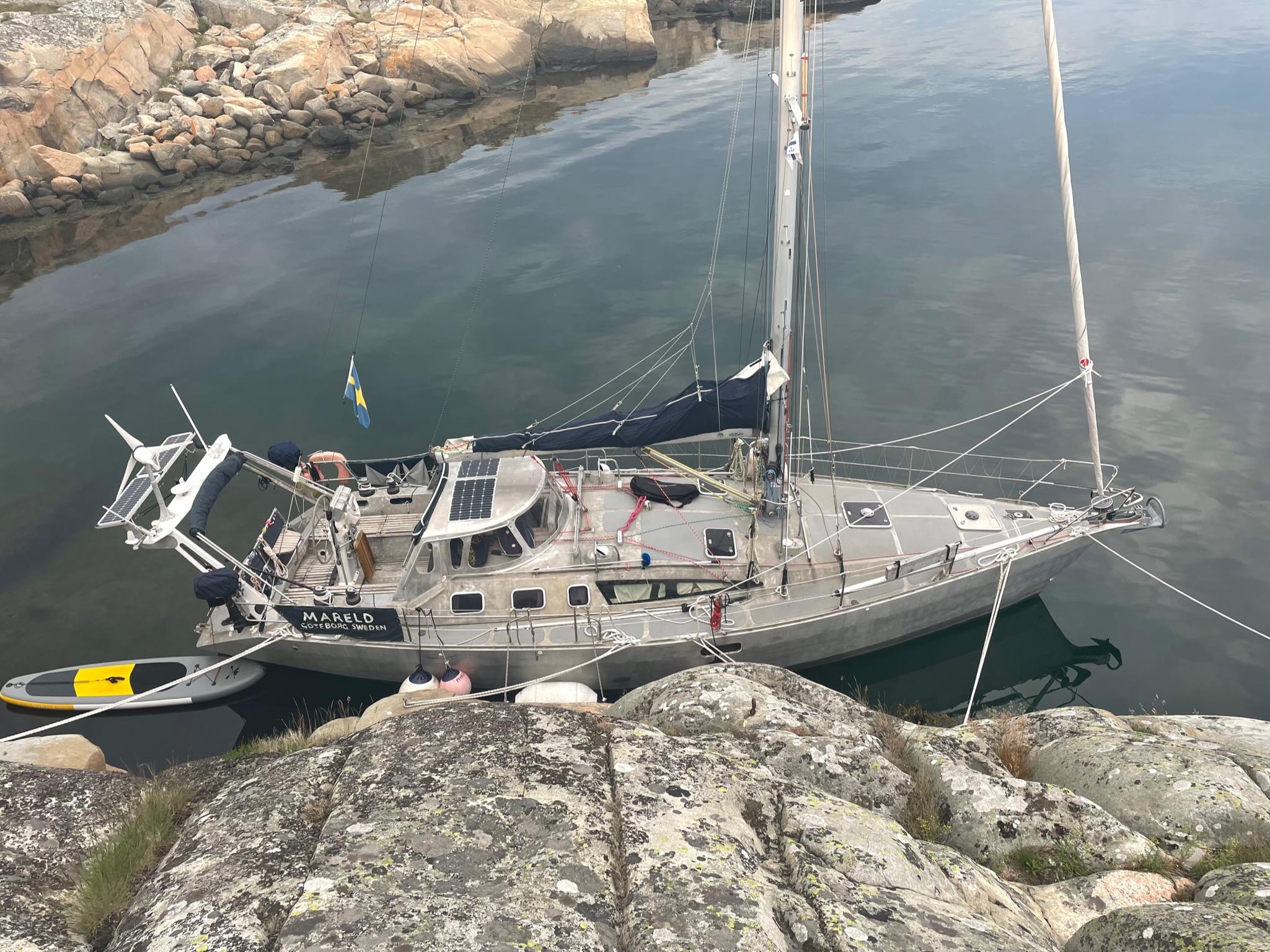






Diving

What you need to know to dive safely!
A simple summary of what is required to safely dive 0-5m with compressed air from a diving cylinder in increased atmospheric pressure.
When we sail long distances and our boats are in the water for long periods of time, we need to scrape/wash the bottom to get rid of growth that causes us to consume more fuel and sail slower over time.
If the water is warm and we are anchored in a quiet bay, it can be done by swimming and free diving with a cyclops and snorkel to carry out the work of cleaning the bottom. But if we want to get a better result and not freeze, we need to have a suit and diving equipment. I have heard certified divers give each other advice and often the advice is completely life-threatening. It is my recommendation to always take advice from those who have the right skills. In this case, you should turn to serious diving instructors. I have summarized a brief description of why the facts indicate that you need to be trained to dive with compressed air to carry out work on your boat regardless of how deep you intend to dive. The most dangerous part of the depth is always 5m-0m, a little simplified. The picture clearly shows the percentage expansion that occurs every ten meters.
From 10m depth to 0m depth the air/gas expands by 100%. The picture also shows the differences. For example, the air/gas expands from 30m to 20m (10m) from 5 liters to 6.7 liters, i.e. only 1.7 liters (25%), compared to the example from 10m to the surface where the expansion is 10 liters (100%) of air/gas.
Dive with diving equipment 0-5m
Long-haul sailors may sometimes need to dive to scrape the bottom, free the propeller from fishing nets or entangled rope. If you do this by free diving, there are no restrictions, just common sense. If you use any form of diving equipment, there are some things you should be aware of to do it safely.
When diving with scuba equipment, you use air that is compressed in a steel/aluminum cylinder and a regulator that allows you to breathe air from the cylinder. If you breathe with this equipment and are on the surface, there are no restrictions.
Diving below the surface of the water increases atmospheric pressure by about 1 atmosphere/10m. At 10m depth you are exposed to 2 atmospheres of pressure, 20m depth 3 atmospheres of pressure, etc. (see picture).
When air (Oxygen 21.946% Nitrogen 78.084%, Argon, Carbon Dioxide, Neon, Helium, Krypton, Hydrogen, Xenon, Radon and carbon monoxide) is inhaled under a higher atmospheric pressure than 1 atmosphere, it has effects on us humans that we need to manage. To simplify and only mention what is of interest to recreational divers and long-distance sailors, we say that air consists of 78% nitrogen and 22% oxygen. Other gases are only important when diving deeper than 40m, in simple terms. A recommendation is to always use a helmet when diving under the boat to avoid blows to the head.
The picture describes how air changes depending on depth (atmospheric pressure). Our lungs have an average size of 5 liters and when you rise to the surface from 10m depth with full lungs and at the same time hold your breath, the air will expand by 100% and the lungs will contain 10 liters of air at the surface. Holding your breath from 10m to the surface is directly associated with injuries, while holding your breath from 40m to 30m is significantly less dangerous, but of course not recommended, breathing normally always applies when diving regardless of depth.
If you do not breathe normally, there is a risk that small lung sacs where gas exchange takes place (alveoli) will burst and you will likely suffer lung damage that can be very serious. To avoid this, you simply have to breathe normally the entire time you are below the surface. As long as you breathe normally, there is no risk of damage. If you dive to fix the boat, you will probably go down to a depth of 5m and will then have 7.5 l of air in your lungs compressed to 5 liters. Therefore, it is important to emphasize the necessity of always breathing normally in order to avoid exposing yourself to the risk of damaging your lungs when diving. When diving to greater depths, the same thing of course applies, which means that you cannot say that diving to 20m would be more dangerous than diving to 10m. What you can say if you are going to generalize is that the deeper you dive, the more knowledge/training is required for various reasons. The diagram clearly shows that air expands the most percentage-wise from 10m depth to the surface (100%). This means that the most critical part of a dive when it is most important to breathe normally is from 10m depth to the surface. From 5m depth to the surface it is therefore even more important that breathing is managed correctly. This is one of the reasons why I recommend taking a course and getting a diving certificate even if you are only planning to dive around the boat or retrieve the anchor.



